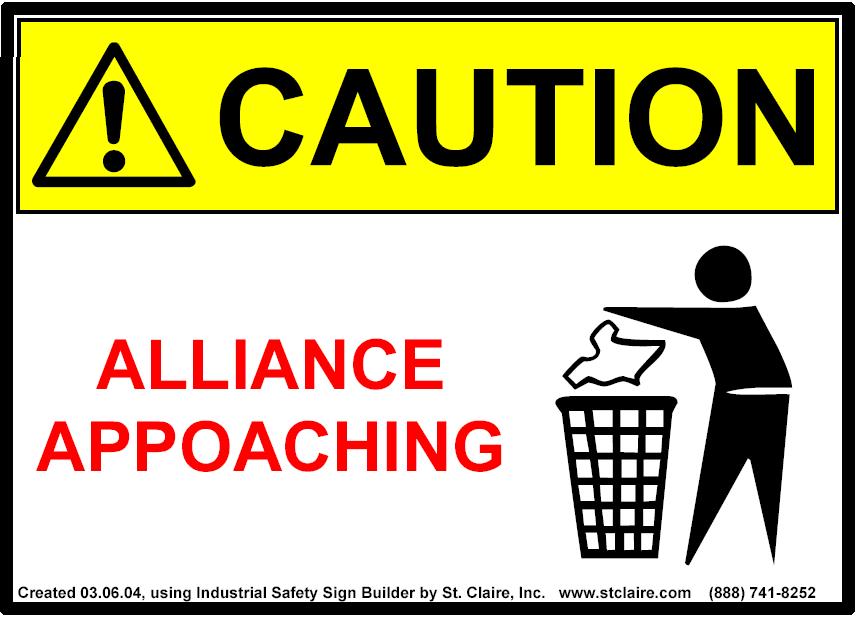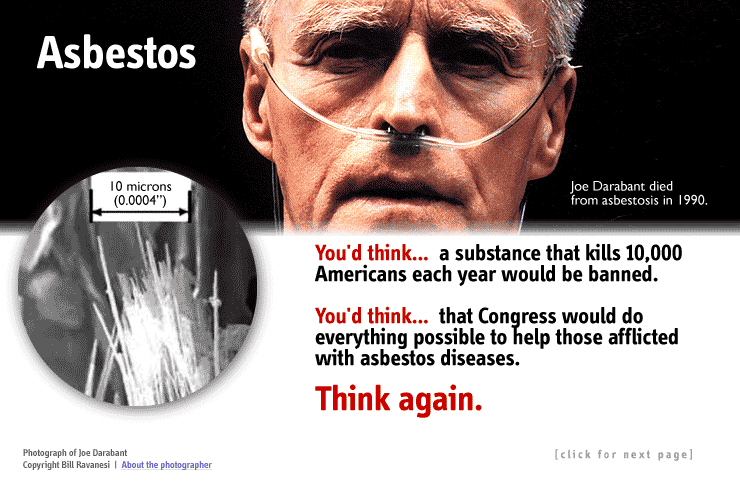The Weekly Toll
Worker killed by forklift at job
CANAL WINCHESTER, OH -- A Stoutsville
man was killed when he became pinned between two large concrete septic tanks while at work at the E.C. Babbert Co. in Canal Winchester.
G. Bryan Hart, 38, died shortly before 7 a.m., according to Fairfield County Sheriff Dave Phalen.
"Hart was moving a concrete septic tank with a forklift to set next to another septic tank. He apparently had gotten off of it to readjust several two-by-fours to set it up off the ground," Phalen said. "He had left the forklift in neutral. Because it was also on a slight incline, the forklift rolled forward and pinned him between the two large concrete septic tanks."
Construction worker killed after truck backs over him
LAKE WORTH, Fla. -
A construction worker was killed when a truck backed over him at a site where sound walls are being installed along Interstate 95.
Maxime Cheriscat, 30, of Boynton Beach, was killed in the accident, the Florida Highway Patrol reported. Cheriscat had worked for Hubbard Construction of Orlando for the past five years.
Cheriscat was apparently standing behind a large tractor-trailer that is used to store fluids for the heavy equipment used on the project. The truck backed up and ran over him Thursday morning, troopers said. More
here.
Construction Collapse Traps Worker
DALLAS -- A 60-year-old construction
worker was in critical condition Friday after being trapped in a building collapse.
The accident happened at about 11:30 a.m. at 4122 Avondale Ave. in the Oak Lawn area of Dallas when a parking garage under construction caved in.
Fire rescue officials said the man was pinned under heavy wooden beams and a wet cement mix.
NY Worker Crushed, Killed by SUV
A KeySpan worker died yesterday after losing both legs in a grisly crash in Brooklyn, moments after he fixed the boiler at a home-nursing office.
Alfonse Ferrandino, 41, was loading his tools into a company van double-parked in front of the Midwood building when an SUV rammed into his vehicle, first pinning him, then sending him flying into the air, according to witnesses. More
here.
Trash hauler killed on job
SALEM, CT -- A 43-year-old Lisbon man and father of three was
killed at work Wednesday after he was pinned and crushed between two garbage trucks.
William Tracy of 110 Rimek Road was driving a recycling truck in a neighborhood off Route 85 in Salem. He was followed by another unidentified worker driving a refuse truck.
Both men, who work for Sterling Superior Services of Bozrah, had stopped in the area of 16 Skyline Drive to pick up garbage at about 8:18 a.m., police said.
Tracy was standing between the two vehicles, at the back of his own truck, when the refuse truck started to roll forward, pinning him between the two, police said. More
here.
One worker dead, 1 hurt in SWFIA construction accident
NAPLES, FL --
A construction worker was killed and another injured Tuesday morning when a form broke loose from its concrete column at a construction site at Southwest Florida International Airport in Fort Myers.
Jebel Polanco Zuniga, 22, was killed in the accident. Gustavo Facio Orosco, 20, was airlifted from the scene to Lee Memorial Hospital in Fort Myers. Orosco was listed in serious condition Monday night.
The two men were employed by D.H. Griffin Construction, a Raleigh, N.C., firm.
Construction worker killed
HILO, Hawai'i — A 48-year-old
construction worker was killed yesterday morning when he was run over by a grader on a South Kohala construction site.
Fire officials were called to the Kolea condominium construction site on Waikoloa Beach Road at 8:20 a.m. and found that
Gordon Cagampang of Kailua, Kona, had died at the scene. Cagampang apparently was lying on the ground and reaching into a manhole to work when he was run over by the grader and suffered head injuries, police said.
Franklin worker killed in Elkton plant accident
ELKTON -- A Franklin, Ky., man working on the roof of Elkton Die Casting in the Industrial Park
fell to his death early Saturday morning.
Todd County Coroner Jimmy Shemwell said
George T. Shelton, 50, of Franklin, was employed by DCD Inc., of Franklin. He was cleaning air ducts on the roof at the die casting plant at the time of his accident.
Worker Killed in U of U Industrial Accident
Salt Lake City --
A construction worker is dead after an industrial accident on the University of Utah campus. 42-year-old
Michael Begay and three other men were working for a re-bar subcontractor.
They were putting up a foundation wall on an addition to the health-science building yesterday afternoon.
The two-and-a-half ton wall toppled over, killing Begay. The other men were not seriously injured.
OSHA looks into Brownsville mill worker's death
BROWNSVILLE, OR - Officials are investigating the Jan. 28
death of a worker at the Bear Mountain pellet mill.
Dean Corliss, 34, was an employee of the Bear Mountain Forest Products Golden Fire Wood Pellets Plant on Lake Creek Drive southwest of Brownsville.
Medics were called to the mill at 6:01 p.m. Jan. 28 for a report of an employee who had passed out. Corliss was taken to Samaritan Lebanon Community Hospital, where he later died.
"It was initially reported as a heart attack, but there were enough circumstances surrounding the death that it warranted opening up an investigation," said Kevin Weeks of Oregon OSHA.
Sgt. Art Sprague of the sheriff's office said that while Corliss had some health problems, the medical examiner also found burn marks on the body consistent with an electrocution.
2 TA bosses slain, ex-worker quizzed
Two Transit Authority supervisors were shot and killed execution-style in a Coney Island train yard yesterday, and police were questioning a recently fired employee.
A security guard on patrol discovered the bodies of
Luigi Sedita, 61, of Staten Island, and
Clive Patterson, 46, of Queens, at 5:30 a.m. They were lying in pools of blood in a work trailer at the southern edge of the sprawling Coney Island Rapid Transit Car Overhaul Yard, police said.
Man killed in wall collapse
The man killed while working at a house in Bethesda Tuesday afternoon has been identified as
Juan Vasquez Izara.
Izara, 36, of the 8000 block of 14th Street in Hyattsville, was using a jackhammer to break up concrete at 8315 Woodhaven Boulevard in Bethesda on Tuesday when a 14 feet high and 5 feet wide section of the brick siding fell outward onto him, according to a release from Montgomery County police. He was killed instantly.
Izara, along with two other individuals, had been hired as day laborers to build an addition to the left side of the Bethesda home.
Worker Dies On Construction Site
WINSTON-SALEM, N.C. -- The Forsyth County Sheriff's Department is investigating
the death of a construction worker.
Investigators said 41-year-old
Jose Cristino Berrios died when he fell from a scaffold. It happened around 7:30 a.m. at a construction site of the future Ronald W. Reagan High School on Transou Road in Pfafftown.
Officials said Berrios fell 31 feet.
KIN RIP DRIVER AS CON ED WORKER DIES
February 25, 2004 -- The
Con Ed worker run down while checking an electrical hot spot at a Queens intersection has died of his injuries, and his relatives are furious.
"I want that kid to know that he destroyed a family" by running down
Thomas Verderosa, 35, said family spokesman John Cahill. "There are three boys out there who had a very loving father taken away from them."
Verderosa was crossing a street last Thursday night to test a manhole cover for stray voltage at Sutphin and Fochs boulevards in South Jamaica, when he was hit head-on by Andre Mattis, 21, in a 2003 Nissan, cops said.
Tire explosion kills airport employee
A Toledo Express Airport employee was killed early yesterday when a tire he was repairing exploded, and he was struck by the tire’s rim.
Brian J. Bergeon, 34, of Whitehouse had removed a tire from a jetway - used by airplane passengers to connect an airplane to the terminal - and taken it into a maintenance building.
The force sent the heavy rim upward, striking Mr. Bergeon and knocking him 10 feet backward. He was hit in the neck by the rim. The rim and tire continued upward, striking the garage door 20 feet overhead, according to Dr. Diane Barnett, Lucas County deputy coroner.
Wickliffe paper mill worker dies in accident
WICKLIFFE, Ky. — A Western Kentucky paper mill
worker was killed on the job, state police said yesterday.
Kenneth Jones, 27, of Wickliffe, was working in the finishing area of the MeadeWestvaco paper mill on Saturday night when he was fatally struck in the head by the arm of a machine as he bent down to pick something up, Kentucky State Police said.




